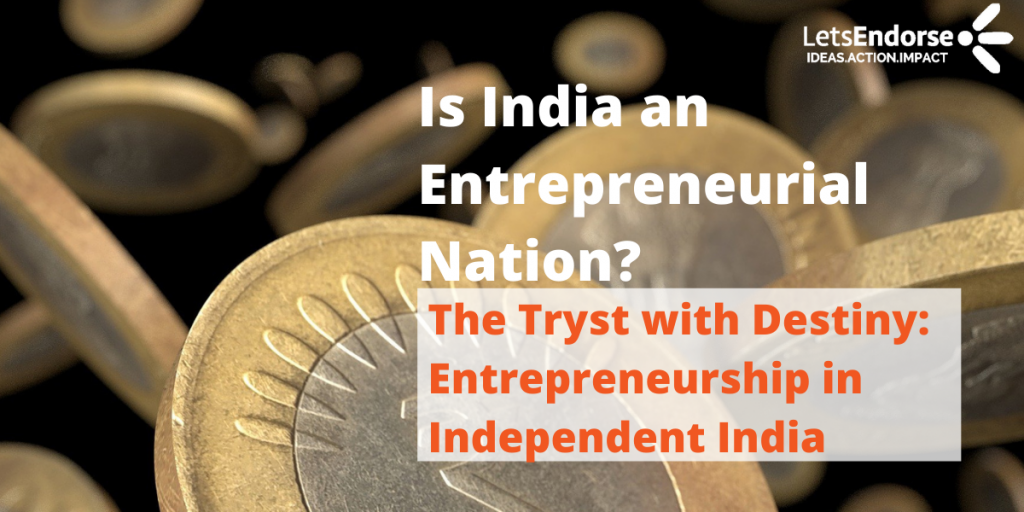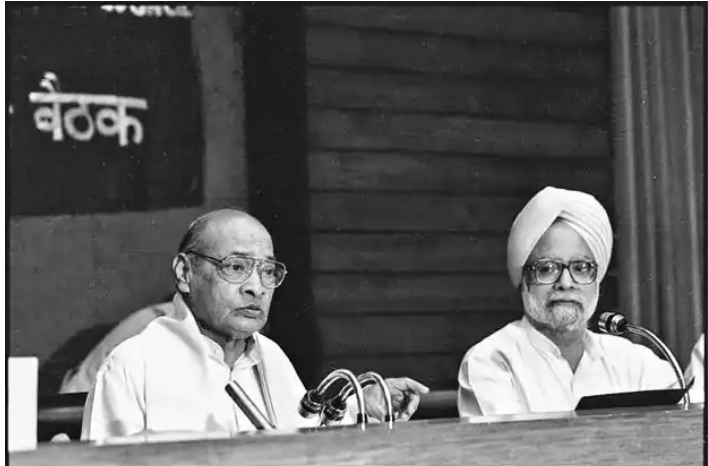This is the third article in a trilogy that shall trace the evolution of the entrepreneurial landscape in India from the early ages to what it is today.

After India became independent, Nehru’s years of the planned economy began. The newly established government protected the markets from foreign competition to foster the growth of domestic industries. The State invested significantly in enterprises such that half of all industrial production in India could be attributed to government enterprises. There were increased restrictions on licenses for enterprises. However, this did not hamper entrepreneurship to a large degree. In fact, these restrictions, combined with the import controls, led to both imitative and innovative entrepreneurship. They controlled competition in a particular sector and fuelled private investment. Restrictions on investments in specific industries also had the indirect effect of diversification: the capital that was to be invested in a single sector was now channelized to other industries. The rise of development finance institutions also spurred entrepreneurship in many sectors. These years also saw the technical and financial collaboration of a few Indian companies (such as the Tatas and the Birlas) with foreign entities to further their industrial activities.
The spread of the entrepreneurial spirit in India was visible and impactful. As Phiroze B Medhora succinctly put across in 1965:
Gradually, also, the industrial process has widened geographically in the country. Starting with cotton textiles in the west and jute textiles, tea, and coal in the east, it has traveled north (sugar, cotton textiles, light engineering) and south (sugar, cotton textiles-particularly spinning-and transport equipment.)
Entrepreneurship in a newly-independent India
After independence, there was a rapid growth of the industry in India. While the so-called License Raj strengthened its grip over the economy and ease of business became highly restricted, India still witnessed the rise of entrepreneurs across all sectors, striving to supply to meet demands and make money in the process. We see the rise of the Mahindra Group, the Reliance Group, Parle, and Bajaj Auto amongst others, all tall names in their respective industries.

Growth of entrepreneurship post-liberalization
After the historic Liberalization of the economy brought about by Manmohan Singh under Narasimha Rao in 1991, the red tape surrounding business was removed, and Indian enterprises finally started competing, once again, on the world stage. The internet boom in the 1990s gave birth to the information technology industry in India, leading to a whole new wave of entrepreneurs that led the country into the digital age. TCS, Infosys, Wipro, HCL Technologies, and Mindtree, among others, created profound impacts on the economy, the reverberations of which can still be felt to this day.
21st Century India and Entrepreneurship
Innovation in the 21st century is happening at a breakneck pace, with highly specialized and niche fields emerging in technology, finance, sciences, and its allied fields and virtually every sector imaginable. Fintech, AI, and SaaS (Software as a Service) are but a few of the newer areas Indian startups are delving into. Indeed, as matters stand, to predict the near future is almost futile; it must already be in the making as we speak!
Indeed, entrepreneurship – that great organizer of the forces of production – truly has progressed from what it was initially in the ancient ages to what it is in the present. India has shown ample spirit and capability through the entrepreneurial class that it has cultivated. However, there are still faults that need to be addressed. There still persist the issues of sustainability, security, and inclusivity, to mention a few. India is still a developing country that hasn’t reached the limits of what it is truly capable of. A new crop of entrepreneurs from diverse backgrounds is coming up and making a mark. We are on the right path. Our methods remain crude, but every day we refine. Our failures are ever-real, but every day we correct them. Our ghosts – legacies of a failed and cruel social order and the economic havoc caused by the colonizers – still haunt us, but we still push forward. With this magnificent spirit of enterprise that India has cultivated over the years, I cannot wait to see what lies in store for India… for us, in the ages to come.
(Note from the Author: I believe it is pertinent to set before the reader a caveat: I am not an authority on this subject. The document before you is a culmination of weeks of secondary research, and credit, if any, must flow to the authors that I have referred to in the course of my study. As such, I feel compelled to highlight two prominent scholars that stand out: Mr. Dwijendra Tripathi and Mr. Phiroze B Medhora. Modern Indian Business Studies owe a considerable amount to the efforts of both of these scholars, and their works are a must-read for all who wish to educate themselves on the subject. I sincerely hope you enjoyed reading this article.)
Anjaney Sudhakaran is an undergraduate business student at the Indian Institute of Management, Indore. His academic interests include economics, history, and statistics. He loves to read fiction and is an ardent movie enthusiast


